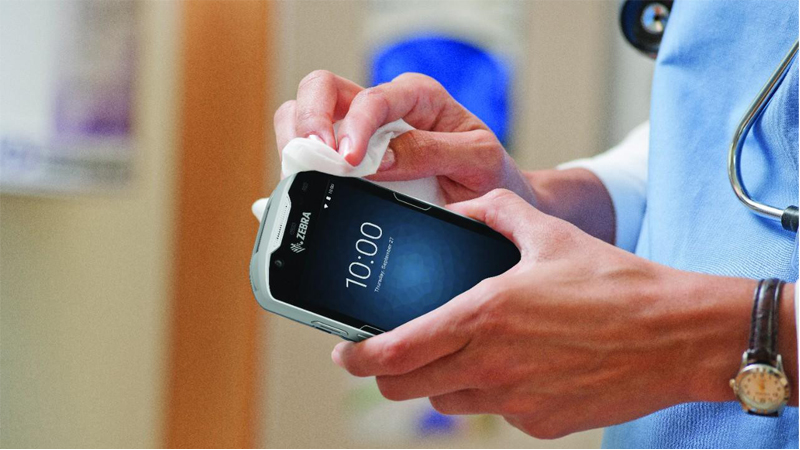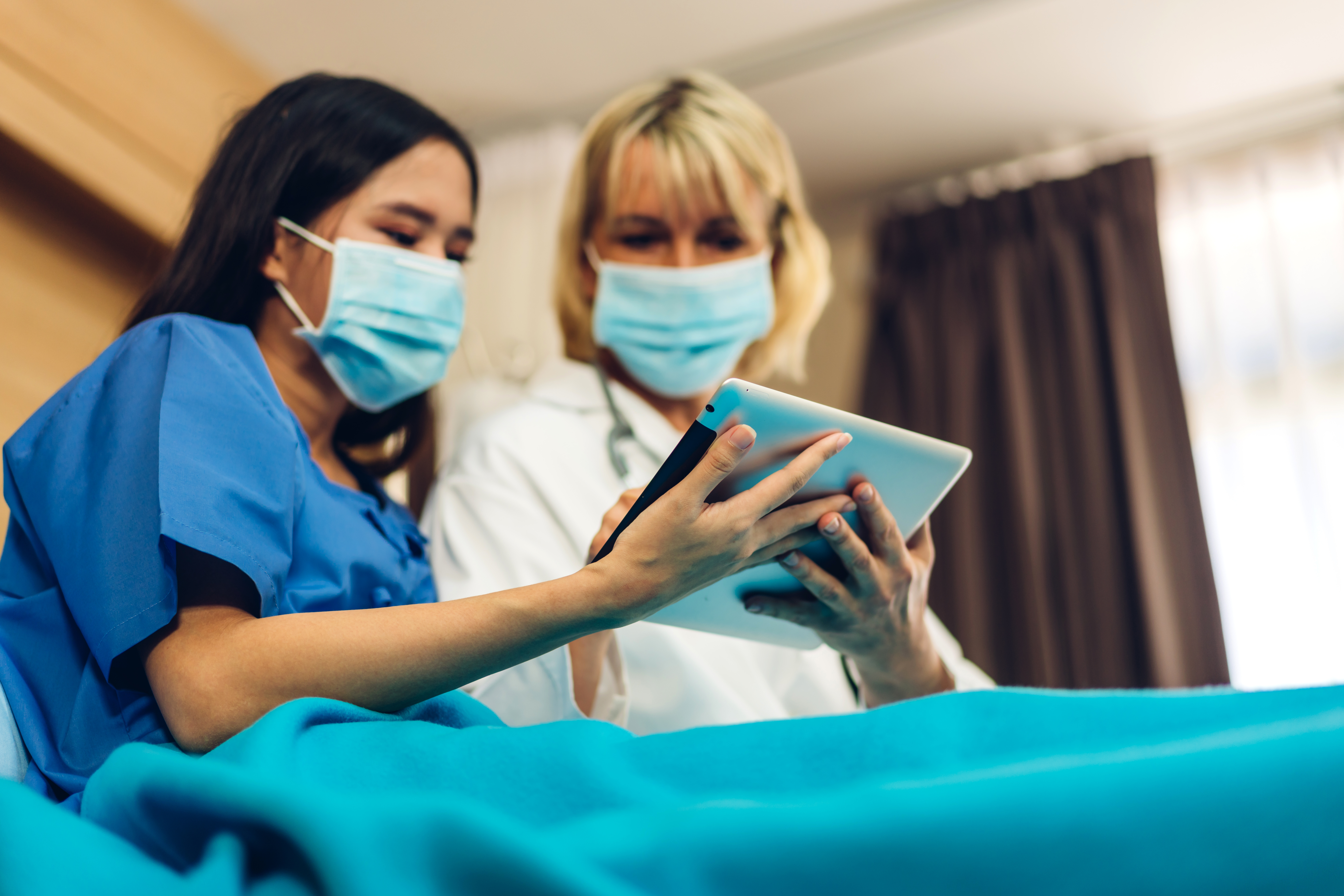Infection Control in the Digital Age: How to Keep Handheld Devices (and Your Hands) Clean

Thorough disinfection of mobile computers, tablets, and other devices is critical in workplaces and public spaces. But there is a right and wrong way to do it.
When the pandemic started, many people questioned whether shared technology devices – like other shared items – could contribute to the spread of the virus. The truth is that there has always been a risk of transmitting infectious diseases via technology. Our hands are constantly touching it. In fact, the Journal of Hospital Infection raised concerns as early as 2009, stating that “bacterial contamination of mobile communication devices could be an important issue affecting the implementation of effective infection control measures and might have an impact on efforts to reduce cross-contamination.”
That is why we at Zebra have always designed our enterprise mobile computers, tablets, wearables, and other devices to withstand intense device cleaning and disinfection. We know good device hygiene is as important to infection control and public health as good hand hygiene. We don’t want anyone to be hesitant to wipe them down every few minutes with strong cleaning agents for fear of breaking the device. We want front-line workers and the people they serve to see technology as a beneficial tool, not a health threat.
That said, it is so very important that technology devices are cleaned and disinfected the right way.
The Five Myths of Infection Control – and Technology’s Role in Each
As Covid-19 started to spread around the world, the Zebra team met (virtually) with Darrel Hicks, a nationally recognized expert in infection control, to talk about best practices for infection prevention in healthcare environments. What we realized in speaking with him and doing additional market research is that most people don’t know the truth about how infection spreads, how technology can (and can’t) contribute to the migration of germs, how to clean technology devices, and the actual compliance rate for hand washing or device cleaning.
So, we worked with Hicks to compile – and debunk – the most common myths in a whitepaper, aptly named “Best Practices for Infection Prevention.” I urge you to check it out. It’s a bit shocking how much we still have to learn about infection control and how much more we must do to educate front-line workers and the general public about infection prevention in this digital age.
The recommendations within the white paper provide a solid foundation for companies in all industries that want to take additional precautions to protect the health of staff and customers.
Clean hands + clean devices = an even more effective infection control strategy

Technology’s Equivalent of the “20-Second Rule”
We’ve always been told that if you scrub your hands and arms while singing “Happy Birthday” twice through and thoroughly dry your hands after, that you can feel good that you’ve properly killed off any bugs that may have hitched a ride. However, there isn’t a single universal way to correctly disinfect technology devices, mainly because no two devices are created equal. They have different components that need cleaning, different types of nooks and crannies to get into, and different tolerance levels for fluid and chemical exposure.
That is why we always advise you to refer to the device manufacturers’ guide when developing cleaning protocols for your workers. That instruction manual should spell out exactly how to clean a device and what you can and cannot use to clean each device. Never assume that all printers, mobile computers, or scanners can be cleaned the same way. Form factor does not dictate disinfection tolerance, nor does an Ingress Protection (IP) or other ruggedness rating. Materials can vary widely among products in the same category or class, and it’s possible you could give workers guidance that inadvertently damages a device or voids a warranty by not spelling out the specific processes and cleaning agents for each device.
For example, Zebra has healthcare and non-healthcare variants of our mobile computers and tablets, often distinguished by the types of plastics used on each device’s exterior and even the smoothness of the device’s exterior shell. The chemicals you use on certain plastics may harm others or be less effective. So, we create detailed User Guides with step-by-step instructions on how to thoroughly disinfect the casing, buttons, screen (if applicable) and more. We also confirm which cleaning agents are safe to use, including the purity or formulation levels for each ingredient, as well as the cleaning agents that should never be used. Precautions and best practices for handling the device during cleaning processes should also be detailed by each device manufacturer, so please read the provided guidance before cleaning your devices. You can always contact the manufacturer’s support team if you have questions.
Your Best First Step
I know you probably have health and safety protocols in place to help prevent the spread of all infectious diseases (not just Covid-19), but I recommend that you review your company’s technology cleaning policy right away to ensure compliance with the original equipment manufacturer (OEM) guidelines. This will help to ensure that employees are properly disinfecting mobile devices, tablets, and more on a routine basis. It will also help reassure your employees that you are doing everything you can to prevent shared technology tools from becoming a potential source of virus transmission.
As a 501(c)(3) non-profit organization, we rely on donations to save lives. We need your help.
Please consider donating, becoming a member, or exploring corporate sponsorship through your workplace today.

